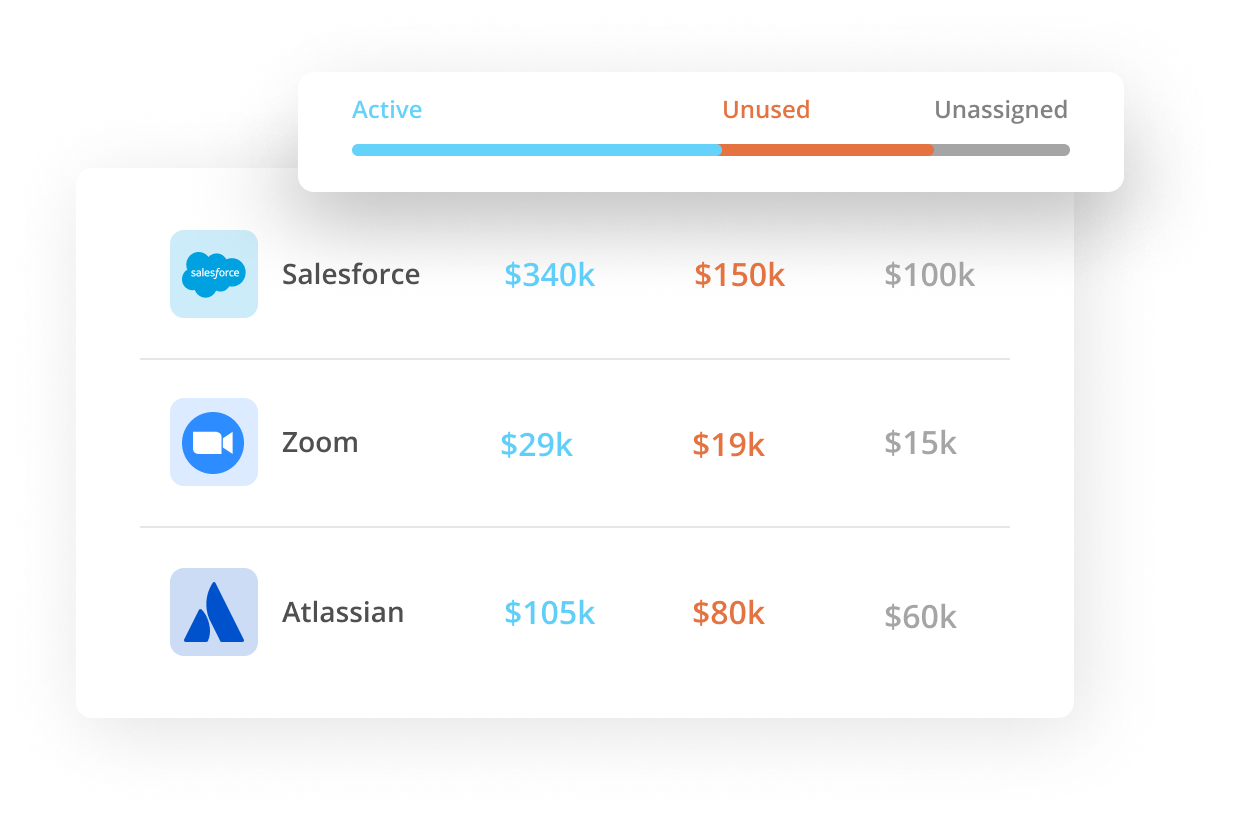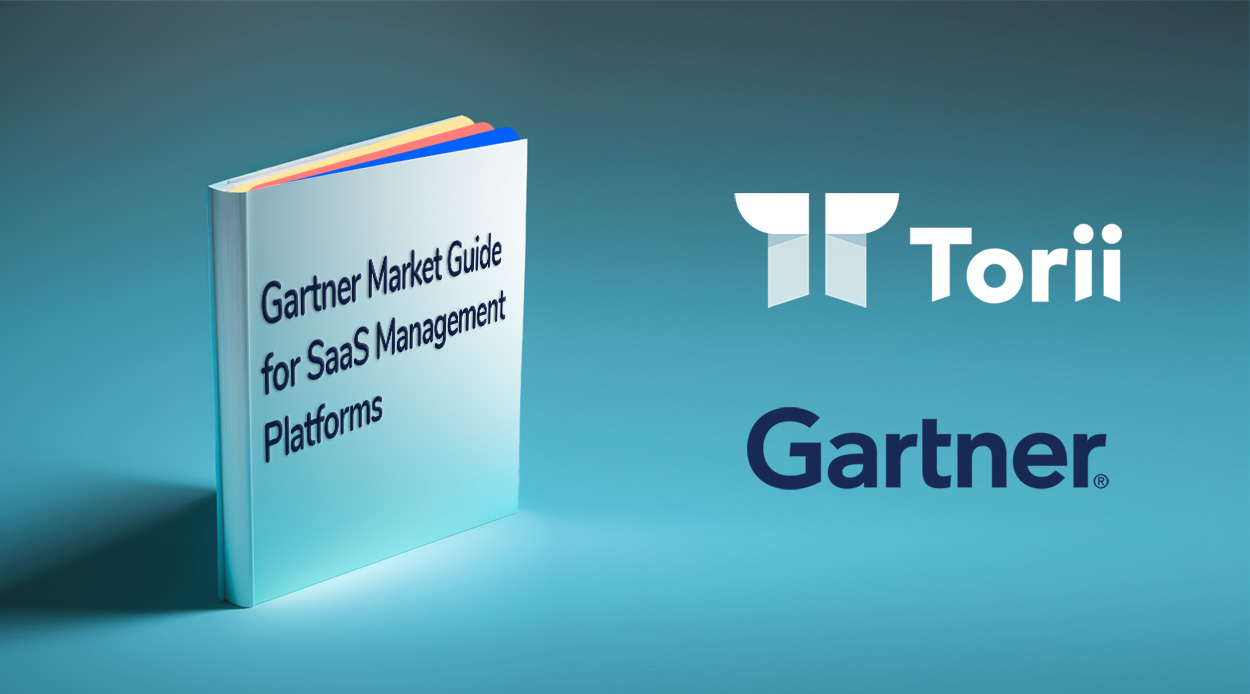Attention: The Latest Gartner® Market Guide for SaaS Management Platforms is out today!
When the pandemic shifted businesses to hybrid and remote work models, it kicked IT spending, SaaS adoption, and overall digital transformation into overdrive. As a leader in the SaaS management space, we at Torii have seen the writing on the wall for years—modern IT requires innovative solutions built for the distributed reality of the cloud-powered business world. Gartner reinforced our vision in the 2021 Market Guide for SaaS Management Platforms (SMPs), asserting that, “Managing SaaS applications with disparate admin controls decreases IT’s ability to track usage, automate management tasks and establish consistent security posture across the portfolio. Scalable SaaS portfolio management requires infrastructure and operations (I&O) leaders to adopt SMP tools.”
Intrigued to learn how an SMP could work for your business? Keep reading for more key takeaways, market recommendations, and outcomes from SMP adoption.
Gartner insight on the SMP market
According to Gartner, “As SaaS adoption accelerates, many IT leaders are challenged with discovering and supporting SaaS in accordance with company, market or geographic policies and regulations. In addition, the increase in cyberattacks is focusing attention on the protection of identity and data in SaaS.” This is what SMPs address.
Gartner defines SMPs in the following way—“SaaS management platforms (SMPs) provide central admin console capabilities to discover, manage, automate, optimize, govern and enable SaaS used by employees. SMP also enhances protection of identities and data while using SaaS.” In other words, SMPs have the capabilities needed to help IT departments solve their most pressing SaaS challenges.
Gartner anticipates, “Through 2027, organizations that fail to attain centralized visibility and coordinate SaaS life cycles will overspend on SaaS by at least 25% due to incorrect and unnecessary entitlements and not rationalizing overlapping tools and instances.”
But as SaaS stacks grow, organizations would be wise to take advantage of SMP solutions ASAP.
How SMPs solve major IT challenges
SaaS applications are often adopted to solve operational inefficiencies by end users. Not IT or Procurement. As a result, the ownership of these applications (along with critical data and insight) is often distributed throughout the organization. Without centralized visibility into those apps and their users, and the ability to easily take action on those apps, SaaS can actually create more inefficiencies and complexity.
It’s time for IT leaders to use tech to manage tech investments. Let’s break down how SMPs do just that.
Discovery and action
Advanced discovery is a critical component of any SMP worth its salt. Per the Gartner report, “Common SaaS discovery methods include integration with and ingesting data from:
- CASB. Parses data from traffic logs.
- Web proxy. Parses data from traffic logs.
- Single sign-on (SSO). Parses data from authentication logs.
- API. Unique setup for and between SaaS apps; breadth and depth varies by tool and app.
- Agent or browser extension. Monitors and logs web activity.
- Expenses/accounts payable. Parses data from transactions.
With this information, IT can build a centralized inventory of their SaaS apps, including those tools adopted outside of IT’s purview, i.e., Shadow IT. Gartner found that two of the benefits of SMPs are, “Greater visibility and manageability of SaaS,” and “Less unsanctioned SaaS usage with a curated store experience for employees to find approved SaaS apps.
Discovery and visibility into data around app usage, owners, users, costs, licenses, and more set a strong, must-have foundation for SaaS management. But it is just the baseline. Even the best data has little worth if you’re not easily able to take action on it, without burdening IT. Bi-directional integrations, automation, and the ability to manage third-party tools directly in your SMP are key to this.
Automation and centralized controls
Gartner points out at the top of the report that, “Managing multi-SaaS environments with disparate consoles results in sprawl, lack of control and overspending.” Imagine you have 20 new employees all starting the same day and several employees offboarding at the same time. Bouncing from app-to-app to give those new employees access, revoking permissions from those leaving the organization, and completing other repetitive administrative tasks leaves a ton of room for errors.
Outdated, manual processes aren’t just an operational risk; they’re a deterrent to the employee experience. Your IT team is bound to burn out if they aren’t empowered with a tool that makes their jobs easier and them more successful. As Gartner notes, ” If operations and automation is your primary focus, prioritize SMPs that have more robust integrations with the SaaS applications you use. They will provide the ability to do more from the central console and limit how often you need to use the apps’ admin console. This also reduces the number of people with administrative privileges and can offer role-based access for some delegation of rights to IT support or LOB partners.”
Implementing an SMP that automates workflows and administrative processes can lift the burden on IT teams and free them up to work on tasks that add greater business value.
Spend optimization and cost control
Organizations with a diverse SaaS portfolio often lack centralized ownership of their applications. Procurement decisions are increasingly made not only by IT, but also by department leaders and even individual employees. While there are benefits to this model, such as accelerated innovation, the realities of distributed app ownership and management often insulate these organizations from feeling inefficiencies and recognizing opportunities for spend optimization.
Gartner highlights this problem, “SaaS spend continues to grow by 15-20% annually, as organizations maintain an average of over 125 different SaaS applications totaling $1,040 per employee annually. IT typically is aware of only a third of those due to decentralized ownership and sourcing.”
The results? Wasted licenses, app redundancies, surprise contract renewals, and other factors undermining ROI.
SMPs ingest and create a central repository of real-time data on all SaaS apps, providing the complete visibility and enhanced control that IT, Finance, and Procurement leaders need to optimize their investments and SaaS vendor relationships.

Security and data governance
Adopting SaaS applications adds security and compliance risks, which are top of mind for IT executives these days. Gartner says, “The broad reach of SMPs positions them as ideal choices for broad, operational support of SaaS application portfolio management, including some security functionality.”
Gartner notes both Security and Governance as two of top capabilities for an SMP.
For instance, the report notes that SMPs key security capabilties as, “Analysis, insights, alerting and automation to protect organizational identities and data within SaaS. Also includes ensuring SaaS policies and configurations are compliant with corporate, security or regulatory standards.” They also support governance capabilities such as, “reporting, alerting and measuring SaaS availability, as well as the breadth and depth of integrations with SaaS apps and other IT tools.”
As SaaS adoption continues to explode and ownership continues to fragment throughout the organization, Security and Governance concerns become paramount. While an SMP won’t provide complete security, it does enhance your security and governance efforts, especially by providing comprehensive discovery—a critical first step.
The SMP solution: Let software manage software
As Gartner recommends, “IT leaders responsible for managing SaaS and/or the digital workplace must maximize ROI by partnering with procurement, finance, line of business (LOB) and asset management, as well as IT security, digital workplace and application leaders, to cover all phases of the SaaS life cycle.”
While legacy solutions play catch up, IT leaders are looking for the ROI that only SMPs like Torii can provide—now. Torii is built for the distributed workplaces and digital infrastructures that I&O leaders have been strategically constructed.
The Torii platform uniquely enables IT and other key stakeholders to discover and act on every SaaS application in your portfolio. With over 170 direct integrations, and more than 10,000 secondary integrations, Torii enables businesses to gather rich, trustworthy data on everything they need to control spend, optimize ROI, and de-risk SaaS applications.
Our customers’ results speak for themselves. For instance, since adopting Torii, Gorillas, a fast-growing, on-demand delivery company, has:
- Reduced license costs by hundreds of thousands of euros
- Saved 1000+ hours in onboarding and offboarding
- Eliminated 200+ hours on license management and delegation
With Torii, Hired, an AI-driven hiring marketplace, successfully:
- Reduced onboarding time by 85%
- Eliminated surprise renewals
- Saved $1.7 million in SaaS applications
Envious of those results? Explore Torii’s platform and join us in the SaaS management revolution.
Want to take a deeper dive into the Gartner analysis? Access a complimentary copy of the Market Guide for SaaS Management Platforms.
GARTNER is a registered trademark and services mark of Gartner, Inc. and/or its affiliates in the U.S. and internationally and is used here in with permission. All rights reserved.

